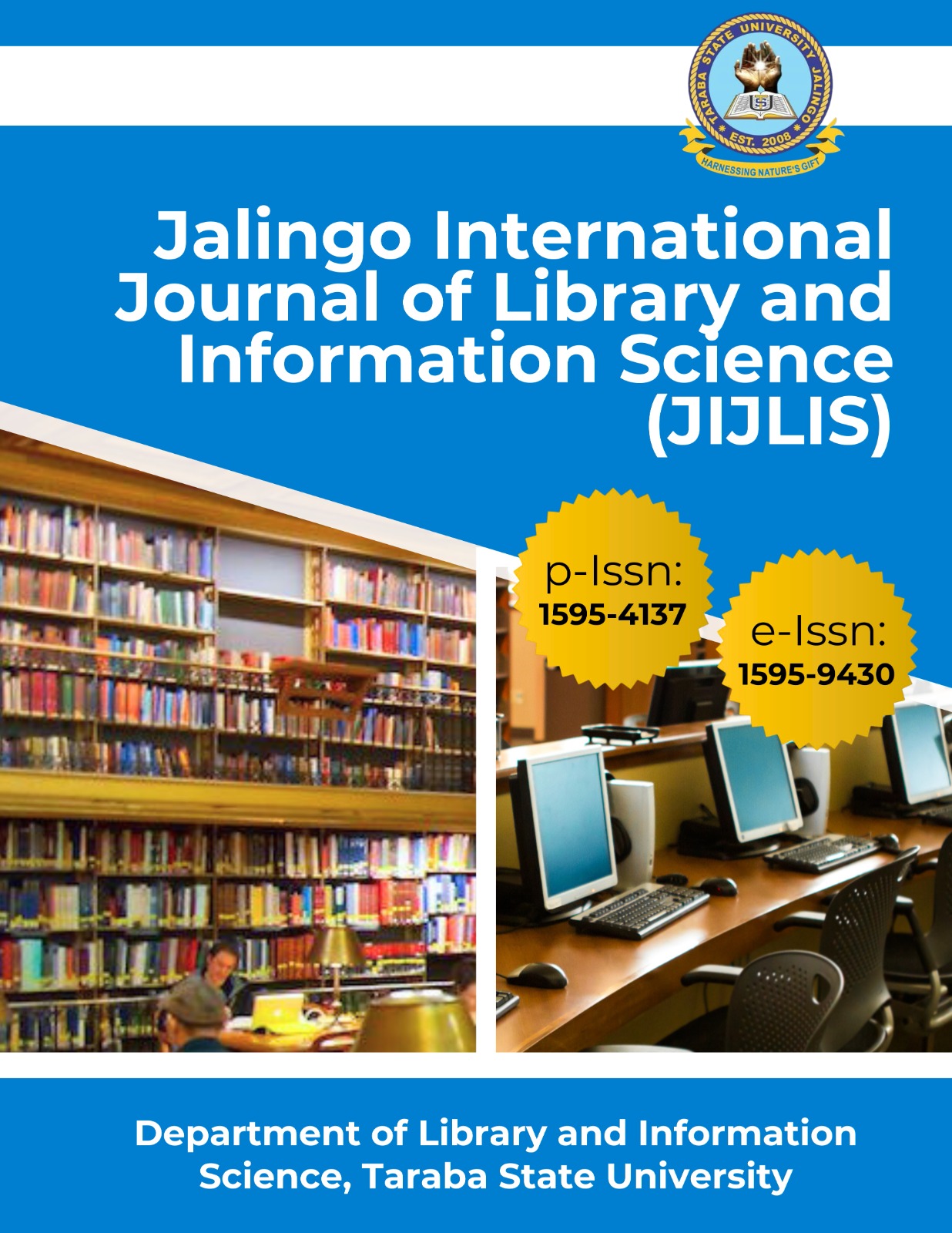Preservation Systems, Theft and Mutilation of Information Resources at the Kwararafa University Library, Taraba State, Nigeria
Abstract
Libraries in third-world countries despite the constraints of finance confronting them still make huge investments in the acquisition of library resources. Deterioration of library resources has been one of the greatest challenges plaguing the libraries. To save these library resources and the libraries from a colossal loss of her heritage, this study examines the preservation and conservation of library materials for effective literacy development in Kwararafa University Library. Three purposes of the study and three research questions were formulated to guide the study. The descriptive survey design was used for the study. The population of the study is sixteen (16) librarians of Kwararafa University Library and a simple random sampling technique was used to select the sample size. The sample
size of the study is 16. The instrument used to obtain information was a structured questionnaire titled PCLMELDQ, and the data collected were analyzed using mean. Test re-test was used to determine the reliability of the instrument and the result was 0.75. Mean statistics were used to answer the research questions. The findings revealed that library security is the most used measure of preservation and conservation practices. Dust and particulate matter are the greatest causes of deterioration of library materials. The finding further revealed that dusting, cleaning and proper shelving are the major techniques adopted by the libraries. Therefore, the
study recommended that libraries should deploy modern preservation and conservation tools such as technologically enabled ICT devices which will aid in adequate storage and enhance the durability and longevity of information materials in the libraries.

